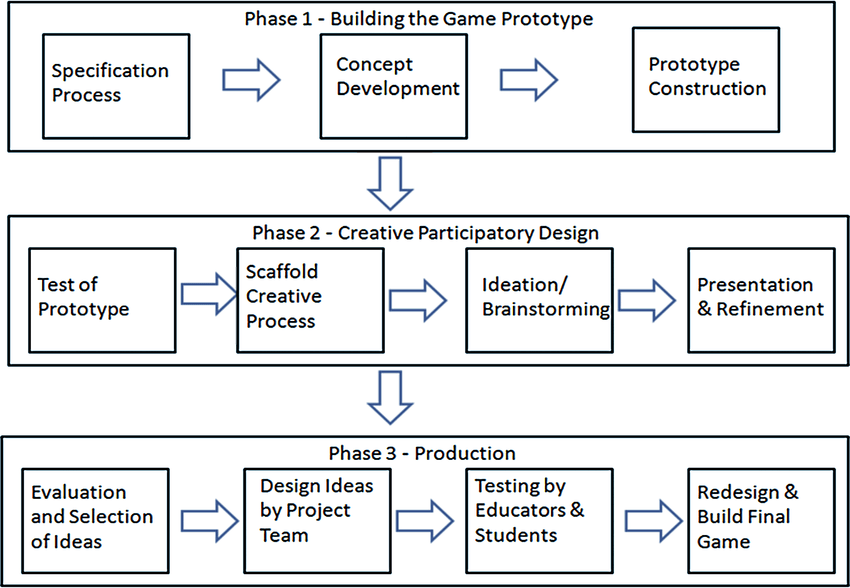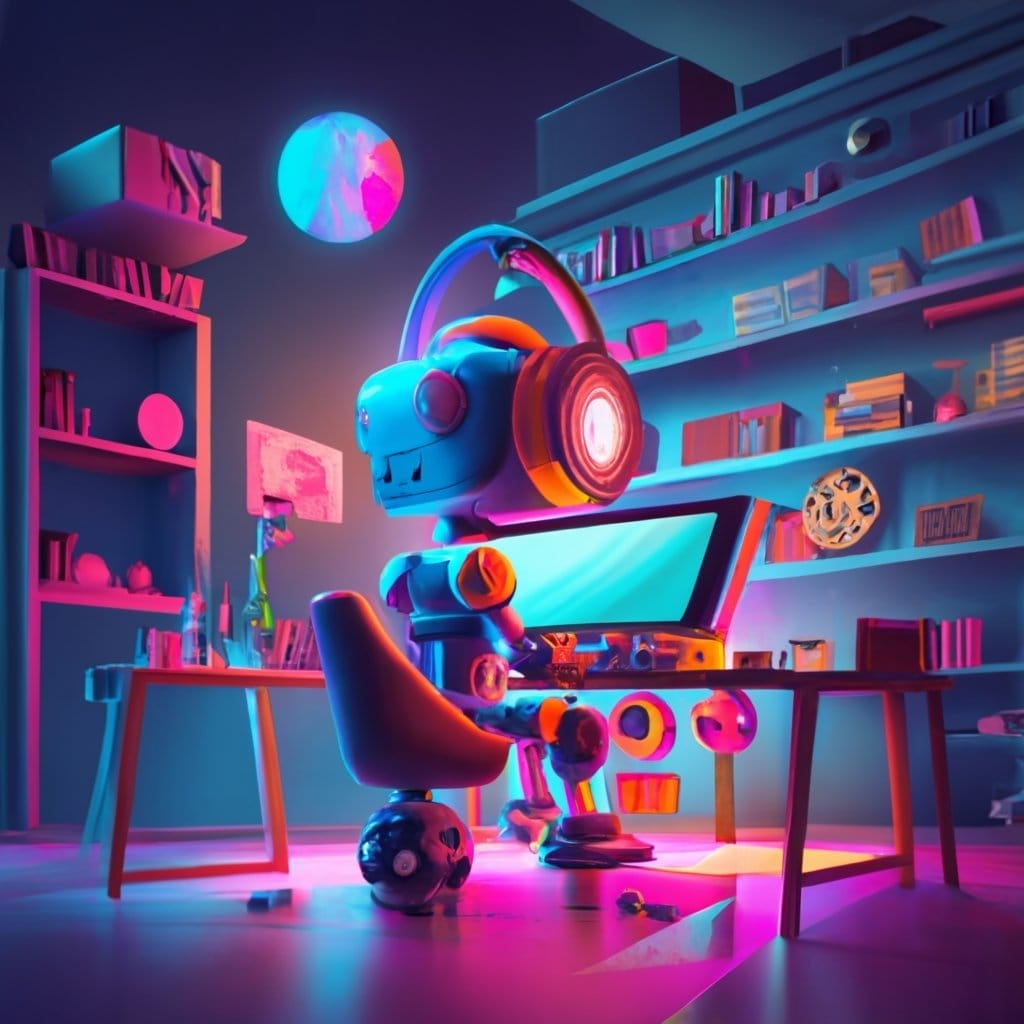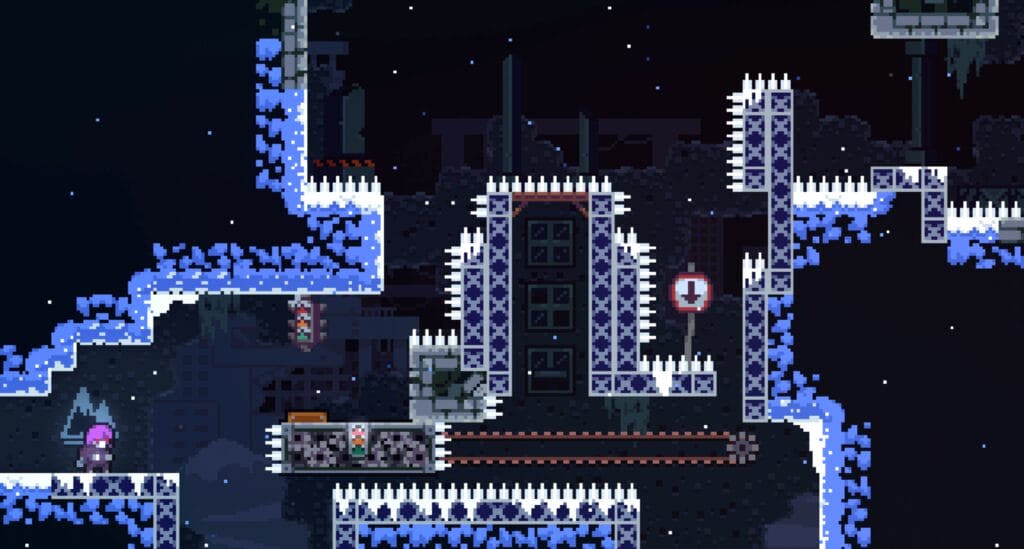This blog post explores the use of ChatGPT as a valuable tool for game designers. It discusses how ChatGPT can assist in game development and enhance the overall gaming experience. The post provides insights into the benefits of using ChatGPT and offers practical tips for integrating it into game design processes.
Although we are using ChatGPT to illustrate the article, the concepts are applicable to just any Artificial Intelligence chatbot, like Claude or Gemini.
How to use ChatGPT (Or other AI) for game design tool to create a game

Understanding Game Design Process and Game Designer Tasks
Game design is a complex, iterative process that requires a diverse set of skills and tasks from game designers. Here are some key aspects of the game design process and game designer responsibilities:
Conceptualization
Game designers start by conceptualizing and pitching initial game ideas. This involves brainstorming creative themes, narratives, mechanics, gameplay, target audience, platforms, monetization strategies and other core elements.
Designers create documents like concept papers, treatment documents, and game pitches to sell their ideas to stakeholders. Strong creative thinking and communication skills are essential.
Prototyping
Early in the process, game designers prototype game concepts quickly to test core mechanics and technical feasibility. This may involve sketching game boards, creating paper prototypes, developing proof-of-concept digital prototypes, and gathering early playtester feedback. Rapid prototyping skills help designers fail fast and iterate.
System design
Designers map out detailed game systems including win conditions, rules, progression mechanics, resource systems, interface flows, and more. This involves high-level system thinking and documentation. Tools like flowcharts, diagrams, technical design documents help designers flesh out systems.
Content creation
Designers directly create, oversee, or provide direction for the wide range of content needed in games, including visual assets, audio, dialogue, narratives, tutorials, game text, tutorials, and localization. Understanding content pipelines is important.
Balancing and playtesting
Extensive playtesting and balancing work is done to assess and refine the gameplay experience. Designers fine-tune mechanics and progression to create the desired difficulty, depth, and longevity. They analyze playtest data to pinpoint issues and iterate.
In summary, game designers wear many hats throughout the creation process, from high-level creative work to detailed system design and hands-on content creation. Strong conceptualization, prototyping, documentation, project management and playtesting skills are essential to ship smooth, balanced gameplay experiences. Adaptability and team collaboration are also vital. Game creation is a team effort, and designers must communicate and work closely with other disciplines like programming, art, audio, production, and marketing.

Understanding ChatGPT
ChatGPT is an advanced language model developed by OpenAI. It has gained significant attention in the field of natural language processing due to its ability to generate human-like responses and engage in interactive conversations. In this section, we will delve into the capabilities of ChatGPT as a language model and explore its potential applications, particularly in game development.
Generating Human-like Responses
One of the remarkable features of ChatGPT is its ability to generate human-like responses. This is achieved through a two-step process: pretraining and fine-tuning. During the pretraining phase, the model is exposed to a large dataset containing parts of the Internet to learn patterns and gain a general understanding of language. The fine-tuning phase follows, where the model is trained on more specific and curated data with human reviewers providing feedback.
The combination of pretraining and fine-tuning enables ChatGPT to produce coherent and contextually appropriate responses. While it may not always generate perfect responses, it often surprises users with its ability to understand complex queries and provide useful information.
Engaging in Interactive Conversations
ChatGPT is designed to handle interactive conversations, allowing users to have a more natural and dynamic interaction with the model. Unlike traditional chatbots that rely on rule-based systems, ChatGPT utilizes the power of neural networks to understand and respond to user inputs.
When engaged in a conversation, ChatGPT takes into account the entire context of the discussion to provide relevant and coherent responses. This allows for more fluid exchanges, as ChatGPT is capable of maintaining context over multiple messages. Whether it’s a question followed by a clarification or a series of related queries, ChatGPT aims to provide meaningful and contextually aware responses throughout the conversation.
How AI Can Enhance Game Design
Artificial intelligence has emerging capabilities that can assist with or enhance many aspects of the game design process:
Concept Generation
Game designers start by conceptualizing and pitching initial game ideas. This involves brainstorming creative themes, narratives, mechanics, gameplay, target audience, platforms, monetization strategies and other core elements. It also includes coming up with concepts for art elements like characters, worlds, items, UI and more. Designers create documents like concept papers, treatment documents, and game pitches to sell their ideas to stakeholders. Strong creative thinking and communication skills are essential.
Prototyping Assistance
AI tools could help quickly build functional prototypes by automatically implementing core mechanics, generating artwork and audio, and providing quality assurance testing. This allows designers to quickly validate and iterate on concepts.
Balancing Automation
By leveraging simulation and complex analysis of gameplay data, AI could help balance game progression, economics, difficulty curves, and more. This complements human designer intuition.
Playtesting and Feedback Analysis
AI can facilitate large-scale playtesting, gathering data, analyzing player behavior patterns, and summarizing feedback. This helps designers spot issues.
Content Generation
For games with procedural content, AI can automatically generate art, sound, levels, narratives, text and other assets to accelerate game development.
Concept Consistency Checking
AI tools could analyze game concepts and flag inconsistencies, helping maintain cohesive creative visions and system designs.
In summary, AI has untapped potential to enhance nearly every task and workflow in the game design process. It can both improve designer productivity and creativity. However, human creativity, intuition, and decision-making remain essential to game design. AI is best leveraged as an assistant to designers rather than a complete replacement.
Narrative Generation
For story-driven games, AI has capabilities in automatically generating narrative content such as dialogue, backstories, and branching plotlines. This can provide initial narrative content that designers can then refine and adapt. AI could also analyze narratives to help maintain logical consistency or flag potential issues. By automating some narration tasks, AI allows designers to focus their efforts on high-level storytelling. However, human creativity is still crucial for compelling, emotionally resonant narratives.
Enhancing Game Design with ChatGPT
In recent years, artificial intelligence (AI) has made significant advancements in various fields, including game design. One of the most promising AI models for enhancing game design is ChatGPT. This innovative technology allows game developers to incorporate dynamic and immersive dialogues, intelligent non-player character (NPC) interactions, and compelling storylines into their games. By leveraging ChatGPT, developers can create more engaging and realistic gaming experiences for players.
Generating Dynamic and Immersive Dialogues
One of the key features of ChatGPT is its ability to generate dynamic and immersive dialogues. In traditional games, dialogues are often scripted, limiting the interactions between characters and players. However, with ChatGPT, game developers can create dialogues that adapt and respond to player input in real-time.
By using natural language processing algorithms, ChatGPT can understand and interpret player responses, leading to more realistic and engaging conversations. This allows for greater player immersion and a sense of agency, as players feel like their actions and choices directly impact the game world and its characters.
Providing Intelligent NPC Interactions
Another way ChatGPT enhances game design is by providing intelligent NPC interactions. Non-player characters play a crucial role in many games, serving as guides, allies, or adversaries to the player. With the help of ChatGPT, NPCs can be programmed to have more nuanced personalities and realistic behaviors.
ChatGPT can analyze player input and generate appropriate responses for NPCs, making interactions with these characters feel more natural and authentic. NPCs can adapt to player decisions and exhibit emotions based on context, leading to more immersive gameplay experiences. Additionally, ChatGPT can assist in creating challenging puzzles or providing hints when players are stuck, ensuring a smooth and enjoyable gameplay flow.
Assisting in Creating Compelling Storylines
A captivating storyline is a fundamental aspect of any successful game. ChatGPT can assist game developers in creating compelling narratives by generating AI-generated content. With its vast knowledge base, ChatGPT can provide developers with ideas for plot twists, character development arcs, and unexpected events.
Game developers can also use ChatGPT to enhance branching storylines, where player choices have significant consequences. By analyzing player input and generating narrative responses, ChatGPT can adapt the story based on player decisions, making the gaming experience more dynamic and personalized.
Integrating ChatGPT into Game Development
This section provides practical tips for integrating ChatGPT into the game development process. It discusses how to train ChatGPT on specific game-related data, optimize its responses for game contexts, and ensure ethical and responsible use of AI in gaming. The section also addresses potential challenges and limitations of using ChatGPT in game development.
Game developers are constantly exploring innovative ways to enhance player experiences. One such avenue is the integration of ChatGPT, an advanced language model developed by OpenAI, into game development. By incorporating ChatGPT into games, developers can create interactive and dynamic in-game conversations, improving the overall gameplay and immersion.
Training ChatGPT on Game-Related Data
To make ChatGPT thrive in a gaming environment, training it on game-related data is crucial. By exposing the model to relevant information, it can understand game-specific terminology, context, and even mimic the style of a particular game genre.
Developers can start by compiling a dataset consisting of in-game dialogues, character interactions, and player conversations. This dataset can be enhanced with user-generated content and supplemented with publicly available chat logs from gaming communities or forums. The inclusion of a diverse range of interactions will help ChatGPT generate more meaningful and context-aware responses.
Additionally, fine-tuning ChatGPT on gaming-specific corpora can further refine its understanding of game-related nuances. By leveraging transfer learning techniques, developers can take pre-trained language models and adapt them to the specific needs of their games.
Optimizing Responses for Game Contexts
While training ChatGPT on game data is vital, optimizing its responses for game contexts is equally important. The goal is to ensure that the AI-generated text aligns with the narrative, characters, and overall game experience.
Developers can achieve this by incorporating conditional generation techniques. By conditioning the model on the game state, character attributes, or previous in-game events, developers can steer ChatGPT’s responses towards desired outcomes. This contextual information can be used as input prompts during inference, guiding the model to generate more relevant and coherent responses.
Furthermore, employing reinforcement learning can help fine-tune ChatGPT’s responses over time. By creating reward models that provide feedback on the quality and appropriateness of the AI-generated text, developers can train the model to improve its output within the game context.
Ethical and Responsible Use of AI in Gaming
Integrating AI, such as ChatGPT, into games also comes with ethical considerations. It is crucial to ensure that the AI-driven interactions enhance the gaming experience without causing harm or perpetuating negative behaviors.
Developers should implement moderation systems to detect and filter inappropriate or offensive content generated by the AI. This can be achieved by leveraging community guidelines, profanity filters, and user reports. Additionally, providing players with the ability to customize the AI’s behavior or sensitivity level can provide a safer and more tailored experience.
Responsible use of AI in gaming also includes being transparent about the AI’s involvement. Clearly communicating when a player is interacting with an AI-driven character or system helps maintain trust and avoids deception. By setting expectations and providing transparency, players can better understand the boundaries of the AI-powered interactions within the game.
Case Studies and Success Stories
Welcome to the Case Studies and Success Stories section, where we explore real-life experiences of game designers who have successfully integrated ChatGPT into their projects. This section highlights the positive impact that ChatGPT has had on player engagement, game narratives, and overall game quality.
Enhancing Player Engagement:
One of the key benefits of incorporating ChatGPT into game design is the significant improvement in player engagement. By integrating ChatGPT’s conversational capabilities, game designers have created immersive and interactive experiences that keep players captivated.
For example, in a popular role-playing game, the addition of ChatGPT as a non-playable character (NPC) resulted in dynamic and personalized interactions with players. The NPC’s ability to understand and respond to natural language inputs allowed for more engaging and realistic conversations. Players were delighted by the depth of interaction, leading to increased playtime and overall satisfaction.
Transforming Game Narratives:
ChatGPT has also revolutionized the way game narratives are crafted. Its ability to generate coherent and contextually relevant responses has empowered game designers to create compelling storylines and branching paths.
In a narrative-driven adventure game, the integration of ChatGPT as a storytelling tool allowed for on-the-fly generation of dialogue and narratives. This enabled game designers to adapt the storyline in response to player choices, creating a more personalized gaming experience. Players felt a sense of agency and immersion as their decisions directly influenced the progression of the game’s plot.
Improving Overall Game Quality:
ChatGPT has proven to be instrumental in enhancing the overall quality of games across various genres. Its ability to provide real-time feedback and assistance has helped developers identify and rectify design flaws, ensuring smoother gameplay and improved user experience.
In a puzzle-solving adventure game, the integration of ChatGPT as an in-game hint system elevated the gaming experience. Players could request hints or solutions from ChatGPT, which intelligently analyzed the current game state and provided tailored suggestions without giving away the answer outright. This approach struck the right balance between challenge and assistance, resulting in a more enjoyable and rewarding gameplay experience.
Testimonials from Game Developers and Players:
“Integrating ChatGPT into our game was a game-changer. It elevated the level of immersion and engagement, and our players couldn’t get enough of the interactive conversations.” – John, Game Developer
“As a player, I was thoroughly impressed by the natural and fluid conversations I had with the in-game NPCs powered by ChatGPT. It felt like I was part of a living, breathing world.” – Sarah, Gamer
As these case studies and testimonials demonstrate, ChatGPT has had a profound impact on the game development industry. It has transformed player engagement, revolutionized game narratives, and improved overall game quality. With its conversational abilities and adaptive storytelling, game designers can create captivating and immersive experiences that leave players wanting more.

The Future of ChatGPT in Game Development
ChatGPT, a language model powered by OpenAI’s GPT-3, has shown immense potential in various fields, including game development. As this technology continues to advance, it provides exciting future possibilities and considerations for its integration into the gaming industry.
Advancements in AI Technology
One key area of development lies in improving natural language understanding. As AI models evolve, they can better comprehend nuanced player instructions and respond accordingly. This enhancement opens doors to more intelligent and engaging conversational experiences within games.
Apart from understanding player inputs, AI models like ChatGPT can also generate dynamic and diverse responses. By tapping into vast amounts of data, including games themselves, these models can learn to mimic different characters’ dialogues, adapt to various scenarios, and create immersive narratives.
Enhanced Interactive Conversations
The integration of ChatGPT within games enables more interactive conversations between players and non-player characters (NPCs). Developers can design games where NPCs respond intelligently, providing unique and personalized experiences for players.
Imagine a role-playing game where players can seek advice, gather information, or negotiate with NPCs using natural language. The AI’s ability to understand and generate responses can make these interactions feel more lifelike and engaging, enhancing the overall gaming experience.
Ethical Considerations
While the advancement of AI technology in game development is promising, it raises important ethical considerations. One significant concern is ensuring that AI-powered games do not promote harmful or offensive behavior. Developers must carefully design and test their AI models to avoid biased or inappropriate responses.
Moreover, as AI models like ChatGPT become more sophisticated, there is a need for transparency and accountability. Game developers should provide clear information to players about the use of AI and its limitations. Additionally, there should be mechanisms in place to handle issues of AI-generated content that may violate community guidelines or ethical standards.
Player Feedback and Iterative Improvement
Integrating ChatGPT in games presents an opportunity to gather valuable feedback from players. Developers can collect data on how players interact with the AI, the types of responses they receive, and their overall satisfaction. This feedback loop can help refine and improve the AI’s conversational capabilities.
Opportunities for customization can also enhance player experience. Game developers may allow players to personalize the behavior of AI characters, define their personalities, or even create their own conversational agents. This level of customization adds depth to the game and creates a more unique and immersive gameplay experience.
Conclusion: How to use ChatGPT for game design tool to create a game
The conclusion of this blog post summarizes the key points discussed and emphasizes the value of ChatGPT as a game designer’s new friend. As we have explored throughout this post, ChatGPT has the potential to revolutionize game design by providing game designers with an intelligent and creative assistant.
Throughout this post, we have seen how ChatGPT can assist game designers in various aspects of their work. It can help generate ideas for game mechanics, create compelling narratives, and provide valuable feedback on game design concepts. ChatGPT’s ability to understand and respond to natural language makes it an invaluable tool for game designers.
With ChatGPT, game designers can leverage its capabilities to create more immersive and engaging gaming experiences. By collaborating with ChatGPT, designers can explore new avenues of game design, push boundaries, and bring innovative ideas to life.
One of the key benefits of using ChatGPT as a game designer’s assistant is the ability to generate ideas. Game designers often face creative blocks or struggle to come up with unique concepts. ChatGPT can help overcome these challenges by generating fresh ideas and offering different perspectives.
Furthermore, ChatGPT can assist in refining and iterating on game mechanics. By providing feedback and suggestions, it can help game designers fine-tune their mechanics to create a more balanced and enjoyable gameplay experience.
In addition to idea generation and mechanic refinement, ChatGPT’s storytelling capabilities can elevate the narrative aspects of game design. By collaborating with ChatGPT, game designers can create rich and complex narratives that immerse players in the game world. ChatGPT can help develop compelling characters, intricate plots, and meaningful choices that enhance the overall gaming experience.
Moreover, ChatGPT can help game designers with the implementation of gameplay features. Whether designers need assistance with programming code or understanding technical aspects, ChatGPT can provide guidance and support throughout the development process.
By embracing ChatGPT as a game designer’s new friend, designers can tap into its vast potential to unlock innovative ideas and enhance their creative process. The collaboration between human ingenuity and artificial intelligence can lead to groundbreaking gaming experiences that captivate players and push the boundaries of the medium.
In conclusion, ChatGPT is an invaluable tool for game designers. Its ability to generate ideas, refine game mechanics, enhance storytelling, and provide technical assistance makes it an essential asset in the game design process. Game designers are encouraged to explore the potential of ChatGPT and leverage its capabilities to create more immersive and engaging gaming experiences. By embracing the power of AI, designers can unlock new possibilities and take their games to new heights.
You can find more interesting contents on our blog, be sure to check on it periodically.
Frequently Asked Questions ( FAQ) How to use ChatGPT for game design tool to create a game
What is the future of game design using ChatGPT?
The future of game design using ChatGPT is promising. With the advancements in artificial intelligence (AI) and machine learning, game designers can now use ChatGPT as a tool to create games in an innovative way.
How can game designers benefit from using ChatGPT for game design?
Game designers can benefit from using ChatGPT for game design in several ways. It can help them simulate game worlds, generate quests and dialogues, and provide a conversational AI experience for players. ChatGPT can be used to unlock new game design ideas and create unique gaming experiences.
How can ChatGPT be used for game design?
ChatGPT can be used for game design by providing it with prompts or specific instructions that define the desired outcome. Game designers can experiment with ChatGPT prompts to generate game content, such as character dialogues, quest descriptions, or even entire game narratives. It can be an exciting tool to enhance the creative workflow of a game designer.
Where can I find recommended ChatGPT prompts for game design?
You can find recommended ChatGPT prompts for game design on platforms like Medium, Reddit, and other game development communities. These platforms often have discussions and posts regarding the use of ChatGPT for game design, providing valuable insights and suggestions.
How easy is it to learn and use ChatGPT for game design?
Learning and using ChatGPT for game design can be relatively easy. While some familiarity with Python or other programming languages may be helpful, you don’t need to be an expert in coding. ChatGPT’s user-friendly interface and extensive documentation make it accessible to game designers of different skill levels.
How can game designers ensure that the game mechanics generated by ChatGPT are clear?
Game designers should carefully review and iterate on the game mechanics generated by ChatGPT. Playtesting is crucial to ensure that the mechanics are easy to understand and enjoyable for players. Game designers can also provide specific guidelines and constraints to ChatGPT when generating game mechanics.
Can ChatGPT be used for indie game development?
Yes, ChatGPT can be used for indie game development. Its generative capabilities and conversational AI features can be utilized by indie game developers to create unique and engaging game experiences. It offers a novel approach to game design that can add value to indie game projects.
What are some other tools like ChatGPT that can be used for game design?
Apart from ChatGPT, there are other AI-driven tools available for game design. These tools also use deep learning and machine learning techniques to assist game designers in various game design tasks. It’s worth exploring different tools to find the one that best fits your game design needs.
How can ChatGPT be integrated into the work of a game designer?
ChatGPT can be integrated into the work of a game designer by involving it in the ideation, content generation, and playtesting phases of game development. Game designers can use ChatGPT to generate storylines, dialogue options, and even simulate player interactions to fine-tune game mechanics.
What is the role of ChatGPT in the game development industry in the future?
ChatGPT can play a significant role in the game development industry in the future. As AI and machine learning technologies continue to evolve, we can expect ChatGPT and similar AI models to become essential tools for game designers and developers.






















